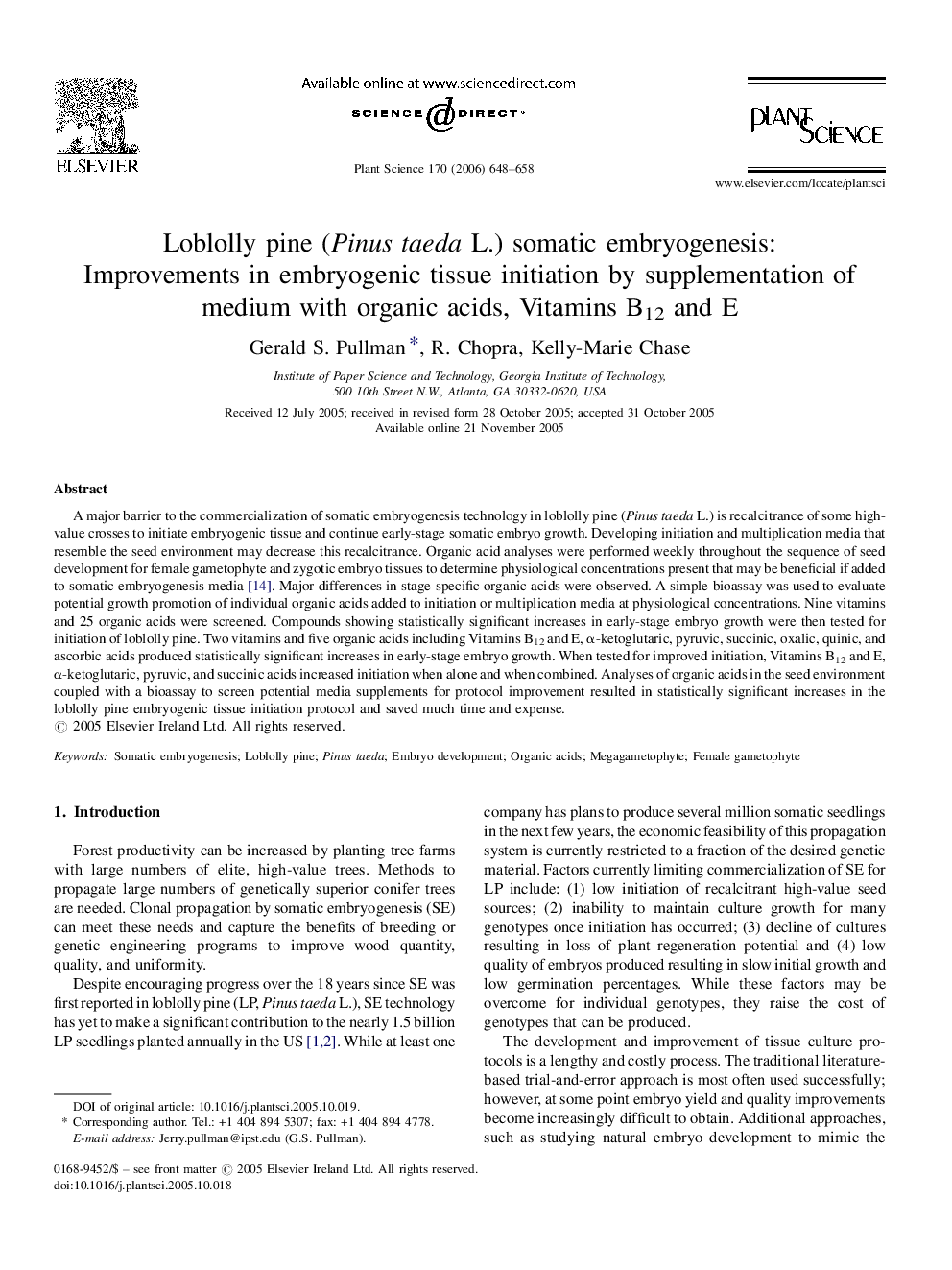| Article ID | Journal | Published Year | Pages | File Type |
|---|---|---|---|---|
| 2018877 | Plant Science | 2006 | 11 Pages |
A major barrier to the commercialization of somatic embryogenesis technology in loblolly pine (Pinus taeda L.) is recalcitrance of some high-value crosses to initiate embryogenic tissue and continue early-stage somatic embryo growth. Developing initiation and multiplication media that resemble the seed environment may decrease this recalcitrance. Organic acid analyses were performed weekly throughout the sequence of seed development for female gametophyte and zygotic embryo tissues to determine physiological concentrations present that may be beneficial if added to somatic embryogenesis media [14]. Major differences in stage-specific organic acids were observed. A simple bioassay was used to evaluate potential growth promotion of individual organic acids added to initiation or multiplication media at physiological concentrations. Nine vitamins and 25 organic acids were screened. Compounds showing statistically significant increases in early-stage embryo growth were then tested for initiation of loblolly pine. Two vitamins and five organic acids including Vitamins B12 and E, α-ketoglutaric, pyruvic, succinic, oxalic, quinic, and ascorbic acids produced statistically significant increases in early-stage embryo growth. When tested for improved initiation, Vitamins B12 and E, α-ketoglutaric, pyruvic, and succinic acids increased initiation when alone and when combined. Analyses of organic acids in the seed environment coupled with a bioassay to screen potential media supplements for protocol improvement resulted in statistically significant increases in the loblolly pine embryogenic tissue initiation protocol and saved much time and expense.
